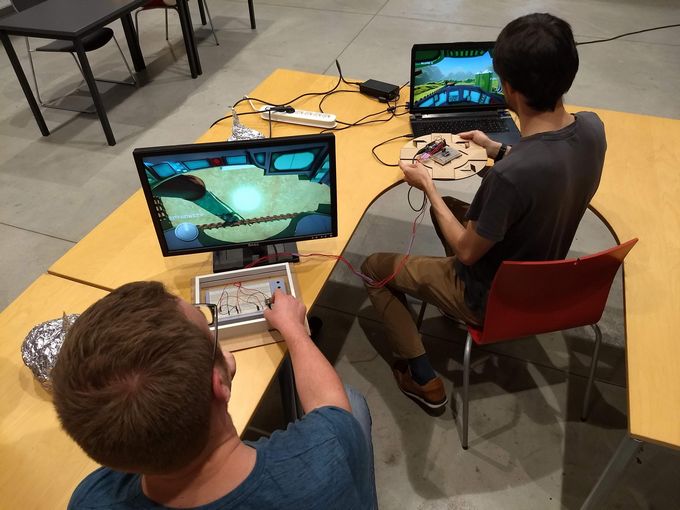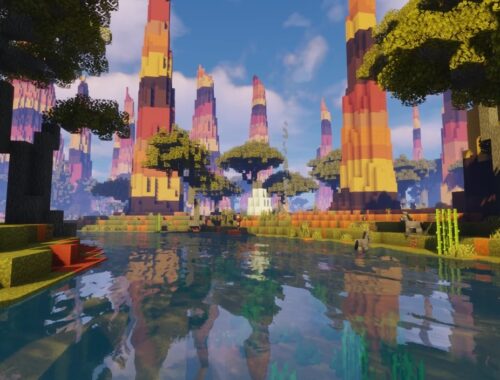How to Teach Game Mechanics Through Environmental Clues

Have you ever found yourself stuck in a video game, unsure of how to progress or defeat a challenging boss? One of the most effective ways to teach players game mechanics and guide them through difficult levels is by using environmental clues. By utilizing the game world itself to provide hints and direction, developers can subtly educate players on how to navigate and interact with the game’s mechanics. In this article, we will explore the importance of environmental clues in gaming, as well as strategies for effectively implementing them in your game design.
Environmental clues are visual and auditory cues that are integrated into the game world to provide information and guidance to the player. They can come in many forms, such as the positioning of objects, the design of the environment, or even the placement of enemies. These clues can subtly convey information about gameplay mechanics, level objectives, or hidden secrets without relying on explicit tutorials or text prompts. By immersing players in the game world and encouraging them to explore and observe their surroundings, developers can enhance the player’s experience and foster a deeper understanding of the game’s mechanics.
One of the key benefits of using environmental clues is that they can help maintain the immersion and flow of the game. Instead of interrupting gameplay with lengthy tutorials or pop-up messages, developers can seamlessly integrate hints and guidance into the game world itself. This not only makes the learning process more engaging and interactive but also encourages players to develop problem-solving skills and critical thinking. By using environmental cues to teach game mechanics, players can feel a sense of accomplishment and satisfaction as they unravel the mysteries of the game world on their own.

So, how can developers effectively teach game mechanics through environmental clues? Here are some strategies to consider when designing your game:
1. Consistent Visual Language: When incorporating environmental clues into your game design, it’s essential to establish a consistent visual language that communicates information to the player. This can include using color-coding, symbols, or patterns to indicate different gameplay elements or objectives. By establishing a clear and coherent visual language, players can quickly identify and interpret environmental clues without confusion.
2. Contextual Placement: Environmental clues should be strategically placed within the game world to provide context and relevance to the player. For example, if you want to teach players how to use a new weapon or ability, you can place interactive objects or enemies in proximity to each other to encourage experimentation and discovery. By creating a cause-and-effect relationship between the environmental clues and the gameplay mechanics, players can intuitively learn how to progress and overcome challenges.

3. Gradual Progression: As players progress through the game, developers vps hosting servers can gradually introduce more complex environmental clues to teach advanced game mechanics. Start with simple and straightforward clues in the early levels to help players build a foundation of understanding. Then, gradually increase the complexity and sophistication of the clues as the player advances, challenging them to think critically and adapt to new gameplay mechanics.
4. Player Agency: Encourage player agency and exploration by designing open-ended environments that invite curiosity and experimentation. Allow players to interact with the game world in creative ways, rewarding them for exploring hidden areas or solving environmental puzzles. By empowering players to make choices and discover solutions on their own, developers can foster a sense of discovery and autonomy that enhances the player’s engagement with the game.
5. Feedback and Reinforcement: Provide feedback and reinforcement to players when they successfully interpret and act on environmental clues. This can include visual or auditory cues that indicate a correct action, such as a door opening, a new pathway appearing, or a puzzle solving itself. By rewarding players for their efforts and guiding them towards the intended gameplay objectives, developers can motivate players to continue exploring and learning from the environmental clues provided.
In conclusion, environmental clues are a powerful tool for teaching game mechanics and guiding players through challenging levels. By integrating hints and guidance into the game world itself, developers can enhance the player’s immersion, engagement, and understanding of the game’s mechanics. Through consistent visual language, contextual placement, gradual progression, player agency, and feedback and reinforcement, developers can effectively educate players on how to navigate and interact with the game world. By embracing the power of environmental clues, developers can create a more compelling and rewarding gaming experience that empowers players to explore, learn, and conquer the virtual worlds they inhabit.
You May Also Like

Gaming in the Cloud: Exploring the Future of Cloud-Based Game Hosting
2024-12-16
Scalability Matters: Why VPS Hosting Is Ideal for Growing Gaming Communities
2023-07-12
